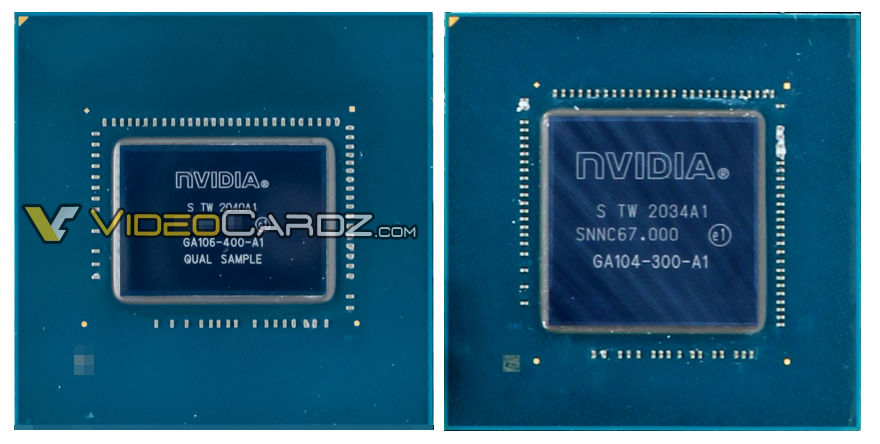Die Shots of Nvidia's Mid-Range GA106 Ampere Core Exposed
Videocardz posted leaked die-shots for GA106, Nvidia's mid-range Ampere GPU. Right now, variants of the GA106 core are responsible for powering mobile and desktop versions of the upcoming RTX 3060 12GB, which looks to join the best graphics cards later this month. As with all leaked data, take everything with a grain of salt, since Nvidia has yet to officially reveal the full specs of GA106.
The GPU specifically photographed by Videocardz is the GA106-400 core. This core is believed to be the fully enabled GA106 die, with a total of 3840 CUDA cores. If true then this means the RTX 3060 mobile features the fully enabled die, while the RTX 3060 desktop model with only 3584 CUDA cores is a cut-down model of GA106 called the GA106-300.

Nvidia may have thought about launching a desktop RTX SKU with the fully enabled die, whether that be an RTX 3060 or not. Presumably, Nvidia instead decided on a cut-down GA106 for the RTX 3060 with 3584 CUDA cores to keep production costs down and improve yields. Plus, it leaves the presumably better (in terms of power characteristics) GA106 chips for the mobile solutions.
Alongside the 3840 CUDA cores, GA106-400 would have 120 Tensor Cores and 30 RT Cores. This might seem strange as GA106's processor, TU106 (powering the RTX 2060) has 288 Tensor Cores and 36 RT Cores. However, one of the core upgrades from Turing to Ampere was the addition of 3rd Generation Tensor Cores and 2nd Gen RT cores. These are both much faster than the cores used in Turing. Currently, all Ampere GPUs have fewer tensor cores and RT cores than its predecessors, so it makes sense that GA106 would have fewer cores than TU106.
The changes and 8nm Samsung process also help reduce GA106's footprint significantly, measuring in at 276mm squared compared to TU106 at 445mm squared. That means more chips per wafer, and a lower cost per chip. These are both good things, though it does little to assuage availability concerns in the midst of the ongoing graphics card shortages.
One other interesting tidbit is that Videocardz shows a supposed GA106-400 with six GDDR6 memory chips surrounding it, plus two more blank spots. We know from Nvidia's specs that both mobile and desktop RTX 3060 feature a 192-bit memory interface, so perhaps the blanks are merely due to the engineering sample.
The RTX 3060 12GB desktop parts are slated to launch this month. We should receive final details on the core specs in the near future, and we'll have benchmarks and testing results as soon as we're able.
Get Tom's Hardware's best news and in-depth reviews, straight to your inbox.

Aaron Klotz is a contributing writer for Tom’s Hardware, covering news related to computer hardware such as CPUs, and graphics cards.